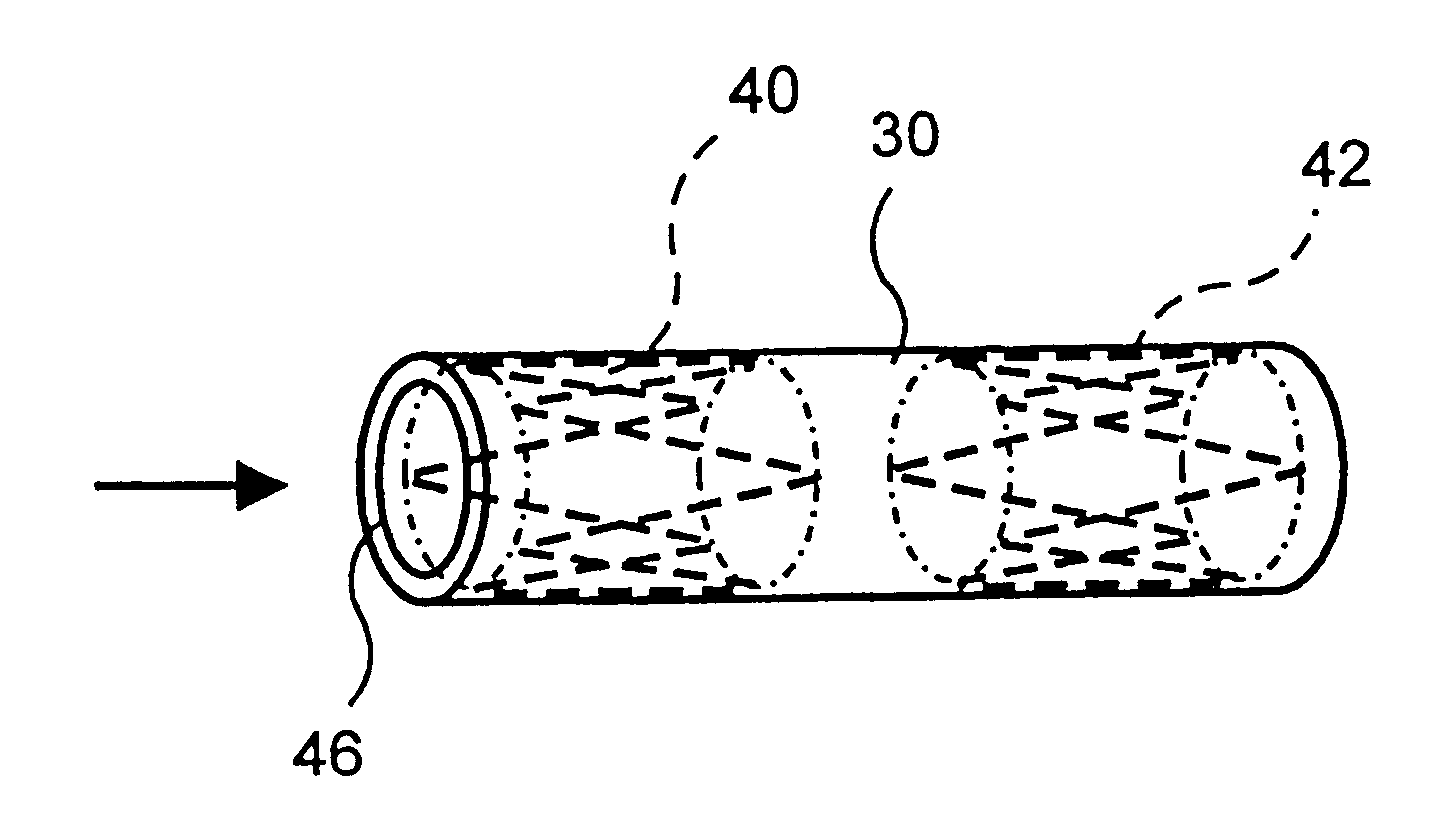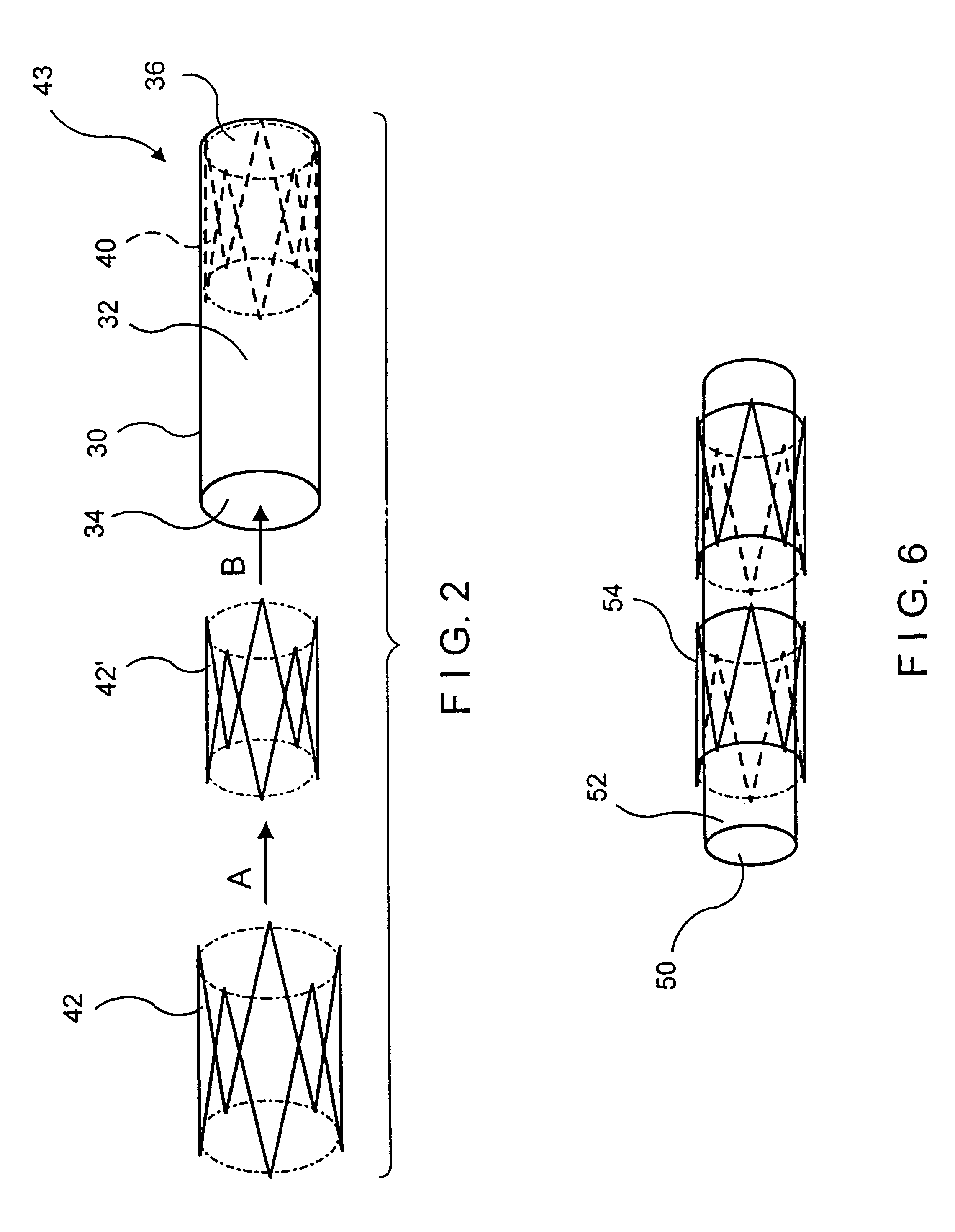Balloon-assisted intraluminal stent graft
a balloon-assisted, intraluminal technology, applied in the field of intraluminal devices, can solve the problems of inability to accommodate variations in patient physiology, undesirable clinical use, and occasional mortality, and achieve the effect of recurrence, and reducing the risk of recurren
- Summary
- Abstract
- Description
- Claims
- Application Information
AI Technical Summary
Benefits of technology
Problems solved by technology
Method used
Image
Examples
Embodiment Construction
In accordance with this invention, an intraluminal device comprising a conformable ePTFE tube is made in three stages illustrated in FIG. 1. The first stage consists of making an initial ePTFE tube. This stage is well known in the prior art and is performed as follows:
a. A PTFE resin is compounded with a lubricant (preferably a petroleum distillate, such as naphtha);
b. The compound is compacted under pressure;
c. The compacted mass is extruded into a tube using a standard ram extrusion process to its predetermined diameter;
d. The tube is dried to remove the lubricant;
e. The dried tube is stretched longitudinally by up to 1000%;
f. The longitudinally stretched tube is sintered or cured at high temperature while its ends are fixed to insure that the tube does not shrink to its original length.
This stage is represented in FIG. 1 as step 10. As explained previously, because of various limitations associated with the extrusion process (including, for example the maximum extrusion force tha...
PUM
| Property | Measurement | Unit |
|---|---|---|
| diameter | aaaaa | aaaaa |
| diameter | aaaaa | aaaaa |
| diameter | aaaaa | aaaaa |
Abstract
Description
Claims
Application Information
 Login to View More
Login to View More - R&D
- Intellectual Property
- Life Sciences
- Materials
- Tech Scout
- Unparalleled Data Quality
- Higher Quality Content
- 60% Fewer Hallucinations
Browse by: Latest US Patents, China's latest patents, Technical Efficacy Thesaurus, Application Domain, Technology Topic, Popular Technical Reports.
© 2025 PatSnap. All rights reserved.Legal|Privacy policy|Modern Slavery Act Transparency Statement|Sitemap|About US| Contact US: help@patsnap.com



